Sustainabilty
Our contribution to Sustainable Development Goals
The UN Sustainable Development Goals were established by all the United Nations member states with the intention of working towards a more sustainable and equal world. It calls upon companies to use innovation, technology, and creativity to address developmental challenges and opportunities that companies can have an impact on.
ECGA members review and revise their sustainability strategy on continues basis. Our sector wants to leverage opportunities and positive sustainability effects of the activities and the products and even more strategically and further reduce negative impacts.
ECGA secretariat has gathered the examples of actions undertaken by its members towards SDGs and divided them three categories: Environmental, Social and Governmental. Below you will see the general structure applied. If you wish to learn more about the concrete examples, please contact ECGA Secretariat.
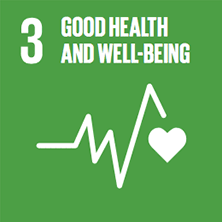
3
Good health and well-being
Safe and healthy working conditions are a top priority in the European carbon and graphite industry. Companies also frequently extend workforce health and well-being programmes to local communities and contractors, ensuring positive effects on people in the.
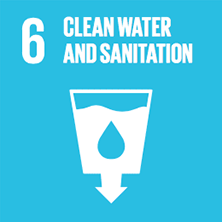
6
Clean water and sanitation
Carbon and graphite companies have a responsibility to ensure their operations do not result in contaminated water supplies or inhibit access to clean water. Sound water practices are regulated at the EU and national levels, and companies collaborate with local experts to accurately measure, analyse and test water supplies.
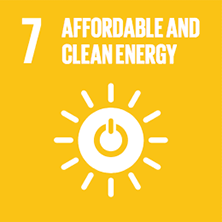
7
Affordable and clean energy
European carbon and graphite are raw materials needed for the products that produce clean energy, either as a direct component such as in batteries in cars or carbon brushes and carbon fibres in wind turbines for example, or as a constituent of other industrial processes, such as the production of silicon wafers or solar panels. Carbon and graphite companies across Europe are also working to run their operations more efficiently, using more clean energy sources and reducing their overall energy consumption.
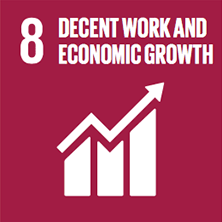
8
Decent work and economic growth
Carbon and graphite companies collaborate with governments and their supply chains to enhance broader economic development opportunities and invest in various ways to become economically, productive.
9
Industry, innovation and infrastructure
Carbon and graphite producers in Europe and their parent companies are global leaders in innovation. The sector is constantly developing stronger, more durable and more efficient materials for these purposes. The European raw materials industry innovation and high-tech developments also contribute to very important positive impacts on the European continent and globally.
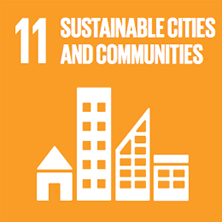
11
Sustainable cities and communities
The industry contributes to sustainable cities by supporting development of infrastructure.
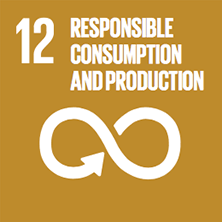
12
Responsible consumption and production
The European carbon and graphite industry has been contributing substantially for decades to the Circular Economy goals by providing industrial goods to recycle steel.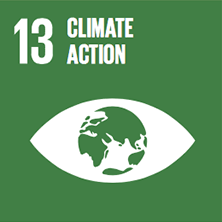
13
Climate action
Carbon and graphite will be decisive for a transition to a Low-Carbon society. The European carbon and graphite industry has adopted ambitious carbon management policies and targets and is providing products to reduce, eliminate and offset emissions in our daily lives.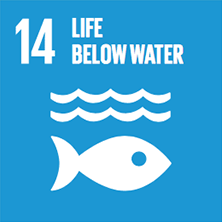
14
Life below water
The European carbon and graphite industry sector contributes to the oceans’ sustainability by understanding and limiting its potential impacts and contributing to the protection and conservation of the oceans and seas.
15
Life on land
The European carbon and graphite sector is working to improve operations so that land is disturbed as little as possible by its operations.issues
TYPE OF ACTIONS
- Efficient energy and resource use
- Upgrading own production technology
- Contribution to climate protection with our products
- Reduction and recycling of industrial waste
- Management of Chemicals
- Management of Water
- Management of emissions to air
- Protection of biodiversity
- Industry innovation and infrastructure
- Regulatory mechanisms
ENVIRONMENTAL ISSUES
Environmental issues are defined as material topics for our industry with special focus on climate change, emissions, energy, waste and water. An improved understanding of environmental and social impacts of products and services is key to ensure a sustainable value chain for the future. Therefore, a strong environmental management of chemical safety, emission to air and water, and minimising the environmental footprint are a key priority to us.
• Efficient energy and resource use
Our industry is constantly striving to improve energy efficiency in its production processes and to reduce CO2 emissions. This is driven by both ecological responsibility and economic motivation, as energy costs represent a high proportion of our production costs. The assessment of each company’ value-chain emissions are an important part of the long-term sustainability strategy.
• Upgrading own production technology
- Focus on upgrading to more energy-efficient equipments.
- Employment of digital technologies to increase process optimisation.
- Establishing additional energy recovery at the manufacturing plant to increase energy and heat reuse within the production process or to provide heat to local communities.
- Replacement of higher-emission fuels with less-carbon-intensive fuels.
- Working on further electrification of high-temperature processes that were previously gas-fired or switching to hydrogen and bio-gas.
- Increasing electrification and thus reducing CO2 emissions related to transportation by switching the company fleet (forklift and other vehicle types) to HVs/EVs.
- Installing off-grid power supply- installation of in-house thermal power generation systems.
- Reducing the companies’ fossil CO2 footprint by increasing the use of renewable carbon sources to reduce the greenhouse gas emissions and development of innovative production processes like carbon capture storage and utilization.
• Contribution to climate protection with our products
- Graphite electrode-driven steel recycling. Graphite electrodes are best known as a key component of electric arc furnaces in which steel scrap is melted to be recycled back into steel.
- Carbon and Graphite materials and products made from specialty graphite, carbon fibers and composites are in high demand not only in traditional industrial processes and products, but also in industries that are defining the future: automotive, semiconductor technology, LED, solar and wind energy, and lithium-ion battery manufacturers.
- Carbon and graphite production also increase conductivity and eficiency in power generation, for example also in hydroelectric generator.
- ECGA members’ solutions contribute to new progress in photovoltaic solar energy and the manufacture of wind turbine generators.
- Electric power transmission has been one of ECGA member’s key focus areas for decades: Companies contribute with their expertise to the field of e-mobility: Smart charging system enables the reliable charging of electric bus batteries in a matter of seconds – both during daily operation and in the depots.
- Carbon and Graphite products are used in all vehicles, but also in every electrical vehicle, and in particular in those based on Li-ion batteries or based on fuel cells.
- Add other applications.
• Reduction and recycling of industrial waste
- Eficient use of resources and avoiding impacting the environment as far as possible by reducing any wastes.
- Most graphite waste (powders, shavings, etc.) generated throughout the production of graphite products (firing and graphitization and machining) can be fed back into the production processes.
- Circularity is becoming more and more critical throughout the value chain. The sector therefore has increased the implementation of process for recovering graphite waste from customers.
- We are working with customers and researchers across the supply chain to increase the collection of end-of-life products in order to recycle them chemically or mechanically.
- Recycled carbon fibers can be used as fieece textiles for automotive production and some feedstock sites in the Graphite Material and Systems business unit reuse many of the by-products.
• Management of Chemicals
- Carbon and graphite itself have not been classified as hazardous or substance of concern. However, some of the raw materials and other chemicals used in the manufacturing processes can be classified and therefore need adequate management and handling. The sector is committed to compliance with all relevant national, European and international legislation and is continuously striving to improve the respective workplace conditions;
- Reuse and recycling of oils and other chemical agents are implemented as far as possible.
• Management of Water
- Most water is used to cool equipment used in the heating processes. It is as much as possible recycled or reused;
- It is systematically checked for its quality before releasing it back into the environment.
• Management of emissions to air
- Companies allocate significant resources to combat dust, the major emission to air from the manufacturing, by using eficient air treatment systems. The long-term ambition is to reduce process dust to levels where exposure is acceptable without the use of respiratory protection at the workplace;
• Protection of biodiversity
- All companies conduct either individually or in cooperation with the local community environmental monitoring.;
- In the case of mines there is a strong focus on maintaining a safe and eficient tailings storage.
• Industry innovation and infrastructure
- Companies are investing a percentage of companies’ turn-over in innovation; up to 10%;
- Companies are participating to national and EU-funded projects and programmes.
• Regulatory mechanisms
- The industry is committed to legal compliance and appreciates and uses regulatory mechanisms that provide a long-term, stable framework for investments and support for implementation of new goals and targets. It is also committed to monitoring successes and achievements on a regular basis.

